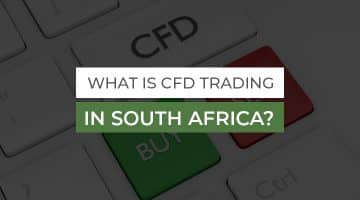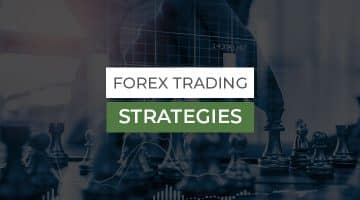Fundamental Analysis in Forex – Explained

In this article
Have you ever come across a situation where a random presidential tweet disrupts the USD, and the EUR/USD went wild?
Chances are you have to face these kinds of situations.
But why does this happen?
Short answer; due to fundamental factors.
Long answer; we’ll mention in this guide.
So, let’s begin!
What is fundamental analysis?
Fundamental analysis is a method of analyzing the forex market by studying the economic, social, and political forces that influence currency prices.
When you think about it, this makes perfect sense! As in Economics 101, supply and demand decide price, or in our case, the currency exchange rate.
It is simple to use supply and demand to predict where prices can go. The difficult part is analyzing all of the variables that influence supply and demand.
You must grasp why and how such phenomena, such as a rise in the unemployment rate, affect a country’s economy and monetary policy, which in turn affects the level of demand for its currency.
This form of analysis assumes that if a country’s current or future economic outlook is favourable, its currency should improve.
The more a country’s economy is in shape, the more foreign companies and investors can invest there. This requires the acquisition of that country’s currency to acquire those assets.
Assume that the US dollar has been strengthening as the US economy improves.
Rising interest rates may be necessary to manage growth and inflation as the economy gets better.
Higher interest rates increase the attractiveness of dollar-denominated financial assets.
To get their hands on these assets, traders and investors must first purchase some US dollars. This raises the currency’s demand.
As a result, the US dollar’s value would likely rise against other currencies with lower demand.
How to utilize fundamental analysis?
To use fundamental analysis, you must first understand how geopolitical, financial, and political news affect currency exchange rates.
This involves a solid grasp of macroeconomics and geopolitics.
There’s no need to be frightened by those fancy-sounding terms because we’ll go through three things to keep in mind when doing fundamental analysis:
1. Macroeconomic indicators
Here are some examples of the most important economic indicators that are an important part of fundamental analysis.
- Central Bank decision on interest rate
- Non-Farm Payrolls (NFP)
- Unemployment rate
- Consumer price index
- Gross Domestic Product (GDP)
All these events can be divided into three types:
- Leading indicators
- Lagging indicators
- Coinciding indicators
a. Leading indicators
Such indicators help predict potential shifts in the country’s economy: changes in their values indicate that a similar negative (or positive) impact will soon be seen in other sectors.
This category serves as the foundation for a method of analysis that predicts an upcoming recession. You must change your trading strategies in response to this information.
Leading indicators include:
Index of Consumer Confidence
In general, it indicates whether the country’s people are willing to spend money. It aids in determining the employment situation as well as the overall condition of the economy.
b. Lagging indicators
In contrast to leading indicators, they represent shifts in the economy that have already occurred over time. You use these indicators in various ways to validate the power of market movements. Since the economy has already begun to shift in a certain direction, you can open medium-term and long-term trades based on the overall trend:
It consists of the following:
Unemployment rate
It shows how many people are currently unemployed in the country.
Consumer Price Index (CPI)
This graph depicts how the price of a consumer basket varies over time.
Balance of trade
The value of products exported and imported over a given period.
c. Coinciding indicators
This type of indicator provides useful information about a country’s current economic situation. Coincident indicators can provide a thorough breakdown of current market patterns, enabling them to adopt a plan to a changing trend. It contains information such as:
Personal earnings
It is the sum of an individual’s earnings from all sources.
Retail sales
It reflects the change in retail sales.
Gross Domestic Product
It is the total cost of all goods and services manufactured in the country over a year.
2. Political factors
The most notable in this group is political factors such as upcoming elections, government changes, and so on. These factors, in general, trigger increased fluctuations in the national currency’s exchange rate. If the upcoming elections will result in a government change, political uncertainty will lead to currency depreciation.
3. Economic forces
It makes no difference if you exchange currency, commodities, indices, or any other financial instrument; it is critical to obtain a comprehensive understanding of the country’s situation to which the selected asset belongs. You must first understand what powers affect the national economy and what kind of news you should follow.
Other variables, such as natural disasters and military conflicts, may also affect market volatility. To read fundamental analysis, a trader must consider these factors too.
Technical vs. Fundamental Analysis
Forex market analysis comprises two types: fundamental and technical. Fundamental analysis is the research of what moves price, while technical analysis is how price moves.
When comparing technical and fundamental analysis, keep in mind that the best analytical framework for your trading strategies is dependent on your resources and goals. Fundamentals are likely to be relevant if you are a long-term investor. Technical, on the other hand, might be more useful if scalping is your game.
Benefits of fundamental analysis
- The chance to see the big picture of the economy (no other type of analysis does this)
- The ability to understand and forecast market movements (technical analysis only shows, fundamental – explains)
- The ability to predict the future of an economy or a specific industry/asset class.
Disadvantages
- There are so many influencing factors.
- There is a constant need to keep up with the news.
- To concentrate on a specific currency pair, the fundamental analysis must be paired with other forms of analysis, such as technical analysis.
Bottom line
Keeping track of fundamental analysis can be difficult for some traders, but it can pay off when done properly. Keep in mind that the forex market is not based on a single variable. Anything may cause the market to change. As a result, having a good sense of fundamental analysis is essential.
Jason Morgan is an experienced forex analyst and writer with a deep understanding of the financial markets. With over 13+ years of industry experience, he has honed his skills in analyzing and forecasting currency movements, providing valuable insights to traders and investors.
Forex Content Writer | Market Analyst
Relevant Posts

What is CFD Trading in South Africa?
[top_three_brokers] There's been an immense increase in the popularity of CFD trading in South Africa. With…
Read more

Stop Loss and Take Profit – How Do You Set It?
[top_three_brokers] As a trader, the most important role is to manage and protect your trading…
Read more

What is a Margin Call?
[top_three_brokers] The traders need to know about margin calls, how they arrive, and avoid them…
Read more

What is a Pipette in Forex?
[top_three_brokers] When we get into a conversation about Forex trading, you will come across different…
Read more

Forex Trading Strategies
[top_three_brokers] Did Caesar invade Gaul without a strategy? No, he was a cunning general and…
Read more

Best Trading Platforms Reviewed
[top_three_brokers] Naturally, many traders are interested in learning about the best trading platform. One of…
Read more

What is Swap in Forex?
[top_three_brokers] Have you been looking at opening a trading account and found yourself puzzled, trying…
Read more

How to Choose a Forex Broker
[top_three_brokers] The Forex market is so large that the prospect of having to scroll through…
Read more

Day Trading and Swing Trading the Currency Market
[top_three_brokers] When it comes to currency trading, the timing of trades can have a huge…
Read more

Bid and Ask Price Explained
[top_three_brokers] Like other financial markets, forex has a bid and ask price. These prices update in…
Read more

What is CFD Trading in South Africa?
[top_three_brokers] There's been an immense increase in the popularity of CFD trading in South Africa. With…

Stop Loss and Take Profit – How Do You Set It?
[top_three_brokers] As a trader, the most important role is to manage and protect your trading…

What is a Margin Call?
[top_three_brokers] The traders need to know about margin calls, how they arrive, and avoid them…

What is a Pipette in Forex?
[top_three_brokers] When we get into a conversation about Forex trading, you will come across different…

Forex Trading Strategies
[top_three_brokers] Did Caesar invade Gaul without a strategy? No, he was a cunning general and…

Best Trading Platforms Reviewed
[top_three_brokers] Naturally, many traders are interested in learning about the best trading platform. One of…

What is Swap in Forex?
[top_three_brokers] Have you been looking at opening a trading account and found yourself puzzled, trying…

How to Choose a Forex Broker
[top_three_brokers] The Forex market is so large that the prospect of having to scroll through…

Day Trading and Swing Trading the Currency Market
[top_three_brokers] When it comes to currency trading, the timing of trades can have a huge…

Bid and Ask Price Explained
[top_three_brokers] Like other financial markets, forex has a bid and ask price. These prices update in…


